This review explores the Garrett Sea Hunter Mark II, an underwater metal detector well-suited for beginner detectorists. Known for its reliability and ease of use, this device can help newcomers confidently navigate their treasure hunting adventures.
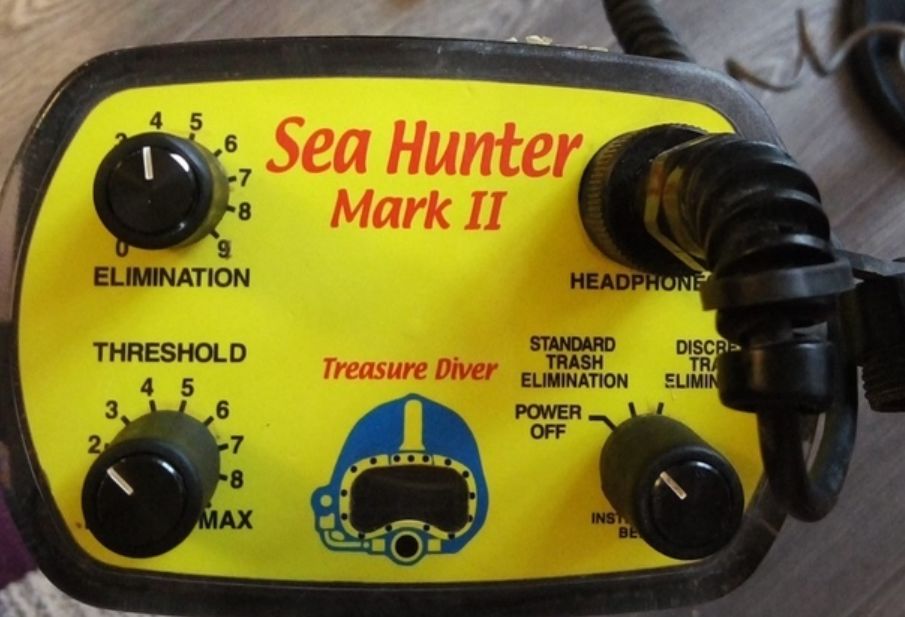
Contents
Review
Garrett manufactures excellent metal detectors for beach hunting (AT Gold, AT Pro and AT Max), but the company didn’t pass by underwater treasure hunting as well.
The need for effective underwater metal detection has led to the development of specialized devices, with the Garrett Sea Hunter Mark II being a prominent option. This metal detector enables treasure hunters to seek out ferrous targets in both freshwater and brackish environments. Its straightforward settings make it accessible and easy to master, particularly for those new to metal detecting.
With the Garrett Sea Hunter Mark II, users can confidently submerge the device up to 200 feet (65 meters) deep. This impressive depth capability ensures that you can explore a wide range of underwater environments in search of valuable finds.
| Model | Garrett Sea Hunter Mark II |
| Weight | 5.1 lbs (2.3 kgs) stem-mounted |
| Control Housing | 31 oz (88 kgs) |
| Length (Adjustable) | 28″ to 52″ (.71m – 1.32m) |
| Batteries | 8 AA (included) |
| Headphones | Submersible headphones included |
| Warranty | 1 year |
| Circuit Type | Pulse Induction |
| Standard Searchcoil | 8″ PROformance™ mono |
| Operating Frequencies (kHz) | 750 pulses per second, adjustable |
| Water resistance | Underwater detector |
| Submersion Depth | 200 feet (65m) |
| Discrimination | Full Range (PI) |
| Ground Balance | Preset |
| Search Modes | 3 |
| Audio Tones | 1 |
| Audio Threshold | No |
| Detector Buoyancy | Near neutral |
| Updatable Software | No |
| Electronic Pinpointing | No |
| VDI (0 to 99 scale) | No |
| Build-in flashlight | No |
Last update on 2025-06-30 / Affiliate links / Images from Amazon Product Advertising API / Source: Amazon Affiliates
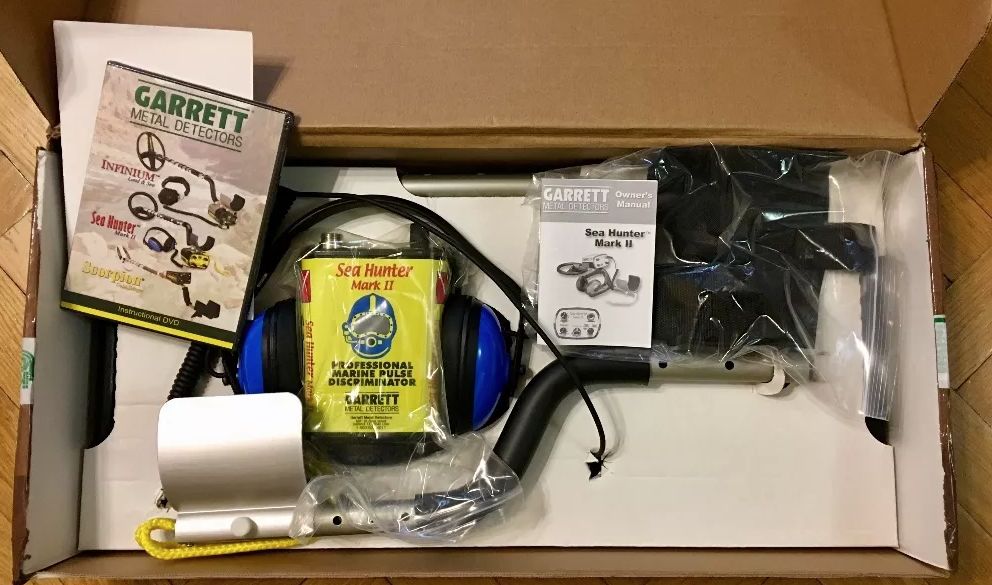
The shaft
The Garrett Sea Hunter Mark II is a versatile underwater metal detector designed to adapt to various treasure-hunting conditions. For user convenience, it offers four assembly configurations to suit different search environments:
- Full Length Configuration: In this setup, the control unit is positioned under the shaft, secured below the elbow. This design promotes better balance and mobility during use.
- Long Shaft Configuration: Here, the control unit is mounted lower than the armrest, providing added length for deeper searches.
- Shortened Shaft Configuration: This option is ideal for underwater treasure hunting, allowing for easier maneuverability in tight spaces.
- Waist Belt Configuration: In this setup, the control unit can be attached to a waist belt, accommodating any shaft configuration while keeping the detector easily accessible.
The detector features an S-shaped aluminum upper shaft with an armrest, forming the core of its construction. Users can attach either a short or long shaft section using a special extension bar, allowing for quick adjustments between compact and elongated designs.
For personalized comfort, the metal detector’s armrest can be easily shifted along the shaft to accommodate the user’s height, requiring no special tools. Additionally, the handle is crafted from foam rubber, ensuring a comfortable grip during prolonged use.
The control unit connects to the upper shaft via special clamps. If needed, users can secure the control unit to a waist belt by placing it in the provided special case, adding further convenience during treasure hunts.
The coil
The Garrett Sea Hunter Mark II metal detector is equipped with a Mono PROFormance coil, featuring an 8-inch diameter. This coil is fully waterproof, along with all other components of the device, making it ideal for underwater treasure hunting.
The coil can be submerged in fresh and brackish water up to 200 feet (65 meters) deep, allowing users to explore a variety of aquatic environments confidently. Its design enhances sensitivity to both small and large metal objects, improving target detection. The 8-inch diameter is particularly effective for pinpointing treasures in areas with underwater vegetation or debris.
Additionally, the coil’s connecting cable is designed to be long enough to provide users with mobility, especially when the control unit is attached to a waist belt. This feature enhances user comfort, enabling easy movement while searching.
Moreover, the coil jack incorporates advanced technology that ensures the leak-proof integrity of the contact elements, maintaining optimal performance even in challenging underwater conditions. The waterproof design not only protects the coil from water damage but also minimizes the chances of corrosion, extending its lifespan.
The Garrett Sea Hunter Mark II is well-regarded for its ability to ignore unwanted signals from minerals in the water, thanks to the technology used in the coil. Users often report successful finds such as coins, jewelry, and historical artifacts when using the Garrett Sea Hunter Mark II in various underwater locations.
Headphones
The Garrett Sea Hunter Mark II metal detector includes a set of wired headphones, which are connected to the control unit via a leak-proof jack plug. This ensures a secure connection, even in wet conditions, allowing users to clearly hear signals while searching underwater.
The twisted cable design of the headphones prevents tangling with clothes, bushes, and other obstacles, enhancing user comfort and convenience during treasure hunting. This thoughtful design feature allows users to focus on their search without distractions, contributing to a more enjoyable experience.
The headphones are also designed to provide clear audio feedback, which is crucial for detecting subtle signals from buried treasures. This audio clarity helps users distinguish between different types of signals, improving overall effectiveness when searching in various underwater environments.
Battery
The Garrett Sea Hunter Mark II metal detector is powered by eight AA batteries, providing an impressive 30 to 40 hours of active use. This long battery life ensures that users can enjoy extended treasure-hunting sessions without the need for frequent battery replacements.
The batteries are included in the device package and come pre-installed in the control unit, allowing you to start your treasure hunting right out of the box. This convenience is particularly appealing for beginners eager to dive into their new hobby without delay.
The battery compartment is located on the back of the control unit and features a special leak-proof crimp cap. This design protects the battery from water ingress, ensuring reliable operation even in wet conditions. Furthermore, using AA batteries allows for easy replacement with readily available options, minimizing downtime during your treasure-hunting adventures.
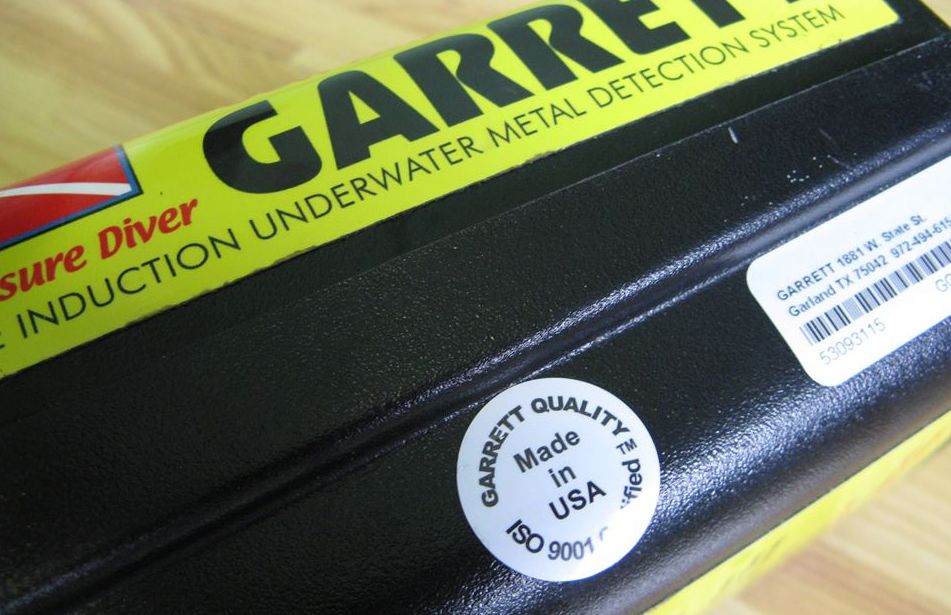
Waterproofness
The Garrett Sea Hunter Mark II metal detector is completely waterproof, allowing it to be submerged in fresh and brackish water up to 200 feet (65 meters) deep. This impressive depth rating opens up a wide range of underwater treasure hunting opportunities, enabling users to explore various aquatic environments, including lakes, rivers, and even the ocean.
Control unit
The Garrett Sea Hunter Mark II metal detector is designed for quick and efficient settings adjustment, an essential feature for underwater treasure hunting. The device’s ease of use allows beginners and experienced detectorists alike to focus on their search rather than on complicated settings.
One notable aspect of this metal detector is the absence of visual display indicators (VDI). All information is conveyed through the headphones, which is a practical decision given the challenges of underwater visibility. Often, conditions can worsen visibility, and there may be instances of zero visibility, making it impossible to read a display underwater.
The control unit panel’s background color is deliberately chosen to contrast with the black handles, making it easier to see and quickly adjust settings even in murky waters. The panel features two potentiometers, one switch, and a headphone jack.
The operation mode switch, located in the lower right corner of the panel, has three positions. When the switch is all the way to the left, the metal detector is off. The first position activates the device’s standard mode of operation, known as the Standard Trash Eliminator. In this mode, users will hear a series of tone signals indicating that the batteries are being tested. Four or more signals suggest the batteries are in excellent condition, two signals indicate satisfactory condition, while one signal or no signal indicates that the batteries need replacement.
The second position of the switch activates a Discrete Trash Eliminator mode, allowing for more refined searches.
The THRESHOLD potentiometer adjusts the threshold noise level, which should be barely audible during detection. Any divergence in the threshold noise indicates the presence of ferrous metal in the soil.
The ELIMINATION potentiometer is used for discrimination adjustment. Turning it clockwise excludes unnecessary objects from detection. However, it is advisable to operate at minimal discrimination values to avoid missing valuable targets like gold jewelry, which may be overlooked at higher discrimination settings.
Notably, the potentiometers and the switch are designed to be somewhat resistant to turning. This design choice prevents accidental adjustments during use, which is particularly important when operating underwater where fine motor control is more challenging. Ensuring stability in settings helps maintain optimal performance while searching for treasures beneath the waves.
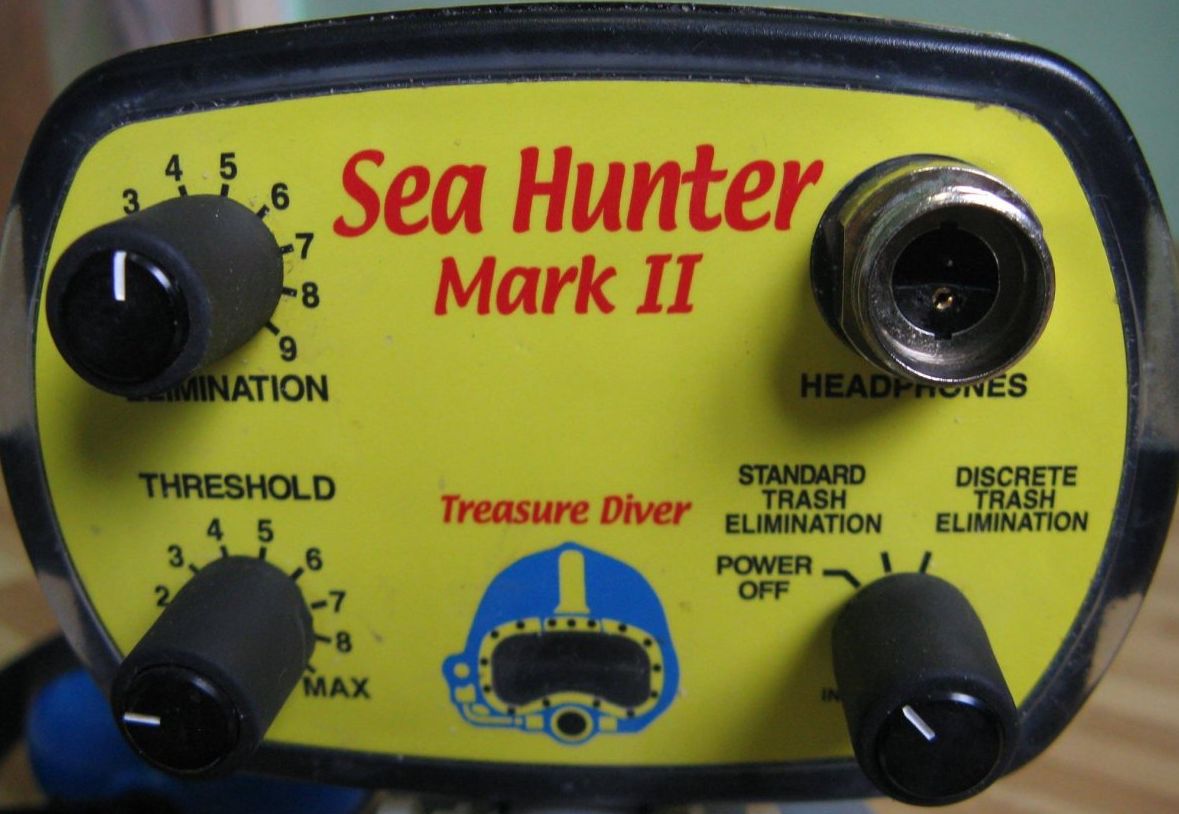
Modes of operation
The Garrett Sea Hunter Mark II employs a Pulse Induction (PI) scheme, which remains unaffected by brackish water or highly mineralized sand. This technology was specifically developed for treasure hunting in challenging environments, such as brackish waters and beaches, where traditional detectors may struggle.
While the absence of a traditional discriminator can be seen as a limitation, it is important to note that some PI metal detectors incorporate metal discrimination functions. The Sea Hunter Mark II features a similar function called Discrete Trash Elimination, which allows users to ignore specific unwanted targets, enhancing its usability in cluttered environments.
The metal detector operates in two modes: the standard mode known as Standard Trash Elimination and the discrete mode, Discrete Trash Elimination. Understanding the difference between these two operational modes is key to effective treasure hunting.
The primary distinction between the modes is that Discrete Trash Elimination is a dynamic mode. In this mode, the user must actively move the coil over the bottom surface to generate response signals. This is similar to the operation of standard Very Low Frequency (VLF) metal detectors, where moving the coil above a target is necessary to receive a response.
Thus, in dynamic mode, the device is ideal for searching for metal-containing targets. Meanwhile, the static mode is beneficial for double-checking targets and pinpointing their centers by observing the signal amplification as the coil moves above them. This static mode is particularly useful in space-limited environments where swinging the coil may not be feasible, or when multiple targets are closely situated.
For general treasure hunting, the dynamic mode is often preferred due to its ability to detect a wider range of targets effectively. The Sea Hunter Mark II is renowned for its performance in saltwater, making it popular among divers and treasure hunters in coastal areas.
The metal detector can run on eight AA batteries for 30-40 hours, ensuring extended treasure hunting sessions without interruptions. The user interface is designed for quick adjustments, allowing novice detectorists to focus on the hunt rather than technical settings. The metal detector comes with waterproof headphones that are specifically designed to prevent tangling during underwater use.
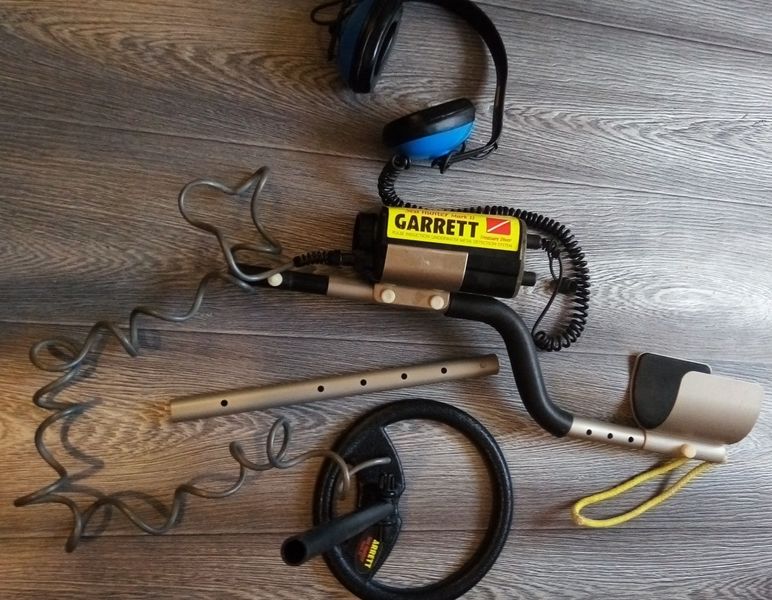
Conclusion
The Garrett Sea Hunter Mark II is an affordable Pulse Induction (PI) metal detector designed specifically for underwater treasure hunting, making it an excellent choice for divers. Unlike more expensive options, such as the Minelab Excalibur II, this device provides reliable performance without the need for specialized skills.
The design team has successfully created a simple yet effective metal detector that is easy to assemble and compact enough for convenient use underwater. The device’s discriminator functions typical of PI metal detectors, allowing it to operate effectively in mineralized soils without significant interference.
This metal detector is particularly suitable for a wide range of divers, especially beginners looking to explore the world of underwater detection. Its user-friendly design encourages new detectorists to dive confidently and start their treasure-hunting adventures.
